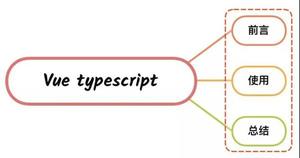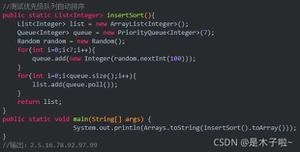使用TypeScript在React组件中的默认属性值
我不知道如何使用Typescript为我的组件设置默认属性值。
这是源代码:
class PageState{
}
export class PageProps
{
foo: string = "bar";
}
export class PageComponent extends React.Component<PageProps, PageState>
{
public render(): JSX.Element
{
return (
<span>Hello, world</span>
);
}
}
当我尝试使用这样的组件时:
ReactDOM.render(<PageComponent />, document.getElementById("page"));我收到一条错误消息,指出foo缺少属性。我想使用默认值。我也尝试过static defaultProps =
...在组件内部使用,但是我怀疑它没有任何作用。
src/typescript/main.tsx(8,17): error TS2324: Property 'foo' is missing in type 'IntrinsicAttributes & IntrinsicClassAttributes<PageComponent> & PageProps & { children?: ReactEle...'.如何使用默认属性值?我公司使用的许多JS组件都依赖于它们,不使用它们不是一种选择。
回答:
回答:
使用static defaultProps是正确的。您还应该使用接口(而不是类)作为道具和状态。
:TypeScriptdefaultProps随着时间的推移改进了与类型相关的类型检查。继续阅读以获取最新和最佳用法,直至较旧的用法和问题。
对于TypeScript 3.0及更高版本
TypeScript特别添加了defaultProps对使类型检查按预期工作的支持。例:
interface PageProps { foo: string;
bar: string;
}
export class PageComponent extends React.Component<PageProps, {}> {
public static defaultProps = {
foo: "default"
};
public render(): JSX.Element {
return (
<span>Hello, { this.props.foo.toUpperCase() }</span>
);
}
}
可以在不传递foo属性的情况下进行渲染和编译:
<PageComponent bar={ "hello" } />注意:
foo即使不是JSX属性所必需的,也 未 标记为可选(即foo?: string)。标记为可选意味着它可以是undefined,但是实际上永远不会,undefined因为defaultProps它提供了默认值。可以将其视为类似于如何将函数参数标记为可选,或将其标记为默认值,但不能同时标记为两者,但这两者都意味着调用不需要指定value。TypeScript 3.0+的处理defaultProps方式相似,这对React用户来说真的很酷!- 在
defaultProps没有明确的类型注释。推断出它的类型,并由编译器使用它来确定需要哪些JSX属性。您可以使用defaultProps: Pick<PageProps, "foo">确保defaultProps匹配的子集PageProps。有关此警告的更多信息,请在此处说明。 - 这需要
@types/react版本16.4.11才能正常工作。
对于TypeScript 2.1直到3.0
在TypeScript
3.0实施对defaultProps您的编译器支持之前,您仍然可以使用它,并且它在运行时可与React一起使用100%,但是由于TypeScript在检查JSX属性时仅考虑了props,因此您必须使用标记默认的props
?。例:
interface PageProps { foo?: string;
bar: number;
}
export class PageComponent extends React.Component<PageProps, {}> {
public static defaultProps: Partial<PageProps> = {
foo: "default"
};
public render(): JSX.Element {
return (
<span>Hello, world</span>
);
}
}
注意:
- 进行注释是一个好主意
defaultProps,Partial<>以便对您的道具进行类型检查,但是您不必为每个必需的属性提供默认值,这是没有意义的,因为必需的属性永远不需要默认值。 - 使用will
strictNullChecks的值时,并需要一个非null的断言(即)或类型保护(即)来移除。这很烦人,因为默认的prop值意味着它实际上永远不会被定义,但是TS不能理解这一流程。这是TS 3.0添加对的显式支持的主要原因之一。this.props.foo``possibly undefined``this.props.foo!``if (this.props.foo) ...``undefined``defaultProps
在TypeScript 2.1之前
这是一样的,但是您没有Partial类型,因此只需忽略Partial<>并为所有必需的prop提供默认值(即使永远不会使用这些默认值),或者完全忽略显式类型注释。
回答:
props.html#functional-and-class-
components)默认道具
您也可以defaultProps在函数组件上使用,但是必须在FunctionComponent(StatelessComponent在@types/react版本之前16.7.2)接口中键入函数,以便TypeScript知道defaultProps函数:
interface PageProps { foo?: string;
bar: number;
}
const PageComponent: FunctionComponent<PageProps> = (props) => {
return (
<span>Hello, {props.foo}, {props.bar}</span>
);
};
PageComponent.defaultProps = {
foo: "default"
};
请注意,您不必在Partial<PageProps>任何地方使用,因为FunctionComponent.defaultProps在TS
2.1+中已经将其指定为部分。
另一个不错的替代方法(这是我使用的方法)是对props参数进行解构并直接分配默认值:
const PageComponent: FunctionComponent<PageProps> = ({foo = "default", bar}) => { return (
<span>Hello, {foo}, {bar}</span>
);
};
然后,您根本不需要defaultProps!请注意,如果您 确实
提供defaultProps了功能组件,它将优先于默认参数值,因为React始终会显式传递defaultProps值(因此,永远不会未定义参数,因此永远不会使用默认参数。)因此,您将使用一个或另一个,而不是两者兼而有之。
以上是 使用TypeScript在React组件中的默认属性值 的全部内容, 来源链接: utcz.com/qa/420928.html








